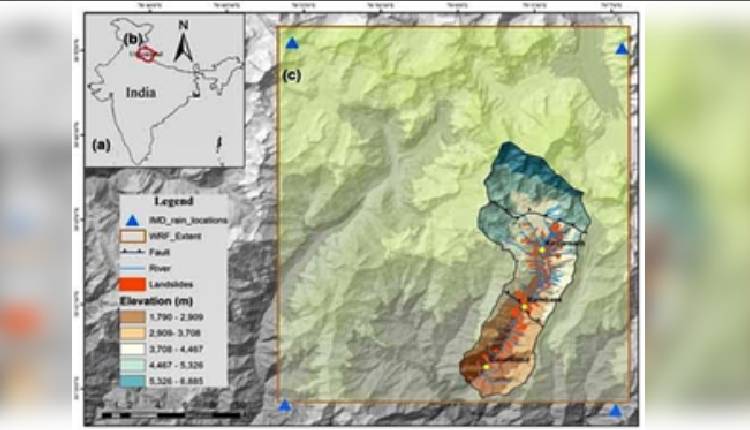New Delhi: Researchers from the Indian Institute of Technology (IIT) Roorkee’s Centre of Excellence in Disaster Mitigation and Management (CoEDMM) on Thursday unveiled a novel framework aimed at strengthening early warning systems for landslides caused by rainfall in the Himalayas.
Landslides and debris flows have long posed significant challenges in the Himalayan region, particularly during severe weather conditions.
To address these issues, professionals in meteorology, hydrology, geomorphology, remote sensing, and geo-technical engineering collaborated to develop a unique approach that integrates meteorological modelling with numerical simulations of debris flows, the institute said.
“At the core of our framework is integrating meteorological data generated by the WRF Model with numerical simulations of debris flows. This approach allows us to understand better the complex interactions between rainfall patterns and landslide dynamics,” Prof. S. Srikrishnan, lead researcher on the project, said in a statement.
The framework significantly enhances landslide prediction in the Himalayas.
Key features include the use of the high-resolution WRF Model to analyse precipitation patterns crucial for landslide prediction, integrating an updated debris flow numerical model, and establishing specific rainfall intensity-duration thresholds through simulations. According to the researchers, this comprehensive approach improves accuracy by considering factors such as soil moisture and past events like floods for fine-tuning.
“This groundbreaking framework holds immense promise in bolstering disaster preparedness efforts not only in the Himalayan region but potentially across India,” said Director of IIT Roorkee, Prof. K.K. Pant.
As per the researchers, the innovative framework aims to contribute to better regional disaster preparedness by providing more refined thresholds that can predict landslide events.
(IANS)
















